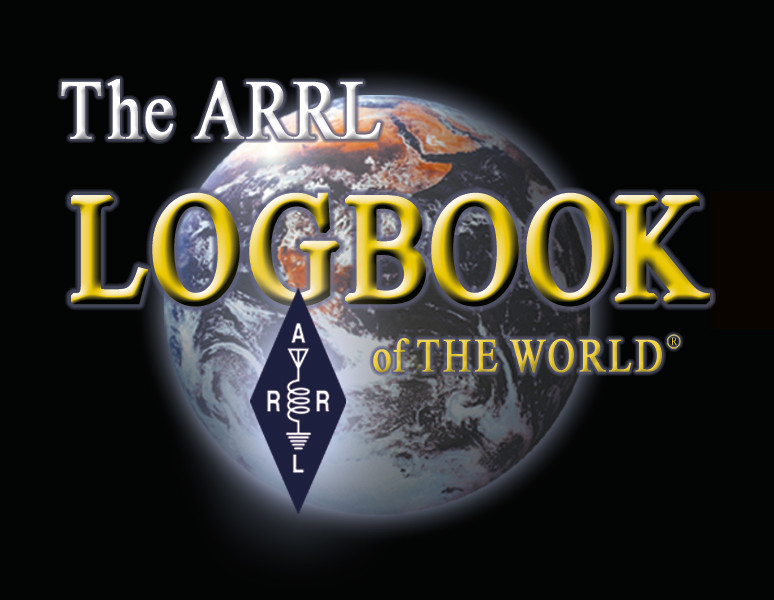The Logbook of the World is for Satellite Operators Too
John Barber, N5JB, DX Honor Roll and Satellite operator
Here's how LoTW uses data lines in an ADIF file to identify satellite QSOs.
Let's assume that you are a satellite user and that you have taken all the steps to prepare
to use LoTW for the first time as detailed in the "Get Started" section of the ARRL
LoTW web page and that you are now ready to start the process of uploading your
satellite log. As a satellite user, you will have to perform some extra steps that DXers
don't have to take, but fortunately they are really simple steps. Follow your loggting
software's instructions to output an ADIF file that contains the satellite QSOs you want to
upload to LoTW. I recommend that you output it to your desktop. Then open the ADIF
file in WordPad. If you are already successfully uploading your satellite QSOs to LoTW
you don't need to do anything further, but you may still be interested in how LoTW
works, so please read on.
A properly arranged and formatted ADIF file is the secret to successfully uploading your
satellite QSOs to LoTW. Your logging program will output a lot of lines of data
including RST, QSL info and other lines of data much of which will be ignored by the
TQSL program. A DX or domestic contact record output from your logging program to
an ADIF file may look something like this:
<CALL:5>KH6BB <QSO_DATE:8:D>20080608 <TIME_ON:6>180108
<TIME_OFF:6>180151
<FREQ:8>14.26300 <BAND:3>20M <MODE:3>SSB <TX_PWR:2>KW
<RST_SENT:2>56 <RST_RCVD:2>59 <QSL_SENT:1>N <QSL_RCVD:1>N
<NAME:25>BATTLESHIP MISSOURI AMATE <QTH:4>AIEA <STATE:2>HI
<COMMENT:18>USS MISSOURI - JIM
<GRIDSQUARE:4>BL11
<CNTY:11>HI,HONOLULU
<CQZ:2>31
<PFX:3>KH6
<DXCC:3>291
<OPERATOR:4>N5JB
<EOR>
It looks pretty intimidating doesn't it, but boiled down to just the 5 essential lines of data
in the ADIF record your non-satellite contacts it will look like this to make LoTW happy:
<CALL:5>KH6BB
<QSO_DATE:8:D>20080608
<TIME_ON:6>180108
<BAND:3>20M
<MODE:3>SSB
<EOR>
If you upload the entire record (and you probably will) LoTW will ignore all but these 5
essential lines of data. In other words, you do not need to edit out the nonessential data.
LoTW will do that for you by picking out only the lines of data that it needs. Your "boiled down" satellite QSO records will need to include the two additional data lines in order to successfully build a satellite QSO record in LoTW:
<CALL:6>WA6DIR
<QSO_DATE:8>20080710
<TIME_ON:6>151200
<BAND:4>70CM
<MODE:3>SSB
<PROP_MODE:3>SAT
<SAT_NAME:4>AO-7
<EOR>
Notice the difference between a DX record and a satellite record. You can see that the
satellite record includes two additional lines of data :
Propagation Mode: <PROP_MODE:3>SAT
Satellite Name: <SAT_NAME:4>AO-7
The ADIF QSO record output from your logging program may contain some additional
lines of data such as:
<FREQ:7>432.150
<BAND_RX:2>2M
<FREQ_RX:5>145.9
They may look like they ought to be essential, but they are actually not essential data
lines needed to successfully upload a satellite QSO record to LoTW. You can leave them
in or edit them out. It doesn't matter.
If your logging program did not output lines of data for the Propagation Mode and the
Satellite Name you will need to edit the ADIF satellite QSO records to add them. The
best way is to copy and paste using the WordPad, or you can use the TQSL editing tool.
To edit the ADIF file using the TQSL editor open TQSL click on "edit existing ADIF
file." It is much more time consuming to use the TQSL editor than to copy and paste in
WordPad. In WordPad you can type the changes to one of the ADIF records then copy
and paste to all the other records to which the same data lines apply. You can open
WordPad (or the TQSL editor) and your logbook on your computer screen and switch
back and forth between them. After you make the appropriate changes, resave the
changes to the ADIF file.
After you get your ADIF file into proper form you are ready to sign and upload your log
to LoTW. First use TQSL to sign and convert your edited ADIF file into a .tq8 file. It is
important to understand that the .tq8 file is what LoTW wants to see on the upload, not
the ADIF file. Sign on to LoTW and click on UPLOAD. Browse for and open the .tq8
file you just created and upload this file. LoTW will do the rest. You can check on its
progress and the results by going to YOUR ACCOUNT and looking at the ACTIVITY
file. It will tell you if your upload was successful and if there were any QSOs rejected for
some reason. Give it a little while (usually a few minutes but occasionally a few hours)
and then go check your QSOs to see if they are there and if there have been any QSL
"hits." Some logging programs allow you to redefine a few fields. For instance the WinEQF
program allows you to redefine the TRACK and the INFO fields. You could redefine
them as the Propagation Mode and the Satellite Name fields so that the program will
output the proper ADIF data. Note, however, that you cannot use these fields for any
other purposes, or add any extra data in the field or it will confuse LoTW and the record
will be rejected. You will still have to add any missing fields to the ADIF file.
Note that a number follows the colon inside the < > brackets. This number refers to the
number of characters needed for the data. For example, the 4 in <SAT_NAME:4>AO-7
means that the AO-7 satellite designator requires 4 characters in the data field. You may
have to adjust this number according to the size of the data field.
By the way, LoTW wants the Satellite Name entered exactly as on the list of accepted
satellites. For instance, if you enter the satellite name as AO7 instead of AO-7 the data
will be rejected during the upload.
So, there you go. A few easy editing steps will allow you to input your satellite QSOs
into LoTW. I hope you and other satellite operators will do it and we can all enjoy getting
those LoTW QSLs.


